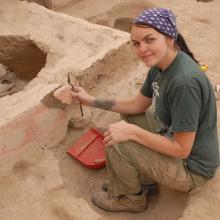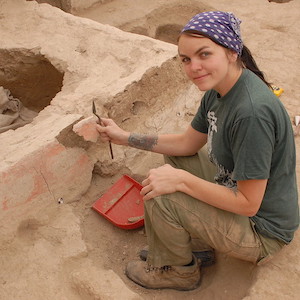Archaeology

Global Architectural History Teaching Collaborative
Perhaps most interesting and relevant for world history teachers and students are the modules that make connections across space and time.
Analyzing Material Objects
The modules in Methods present case studies that demonstrate how scholars interpret different kinds of historical evidence in world history. This module developed by historian Daniel Waugh explores how historians interpret material objects to better understand the past.

A gold dinar of Abd al-Malik minted in Damascus in 697/98
Historians use coins to find evidence of change over time. This dinar coined in 697 or 698 was minted in Damascus by the Umayyad Caliph Abd al-Malik ibn.

Gold dinar depicting Caliph Abd al-Malik
Coins are objects that can help historians see change over time. This Dinar coined in 695 likely depicts Abd al-Malik ibn the caliph or leader of the Umayyad Caliphate. Several aspects of the coin make it an interesting object for study.

Temple of Vespasian altar
This stone alter found in Pompeii, Italy was part of temple dedicated to the Roman Emperor Vespasian who ruled from 69 to 79 CE. The alter depicts a scene of a bull being led to a religious sacrifice, a common practice in ancient Rome.

Gold Solidus of Justinian I (527–65)
Coins like this one from the Byzantine Empire can reveal a great deal. Coins found in a well can tell historians and archeologists the range of dates people settled in a given area. Coins can also help date other artifacts that researchers find near the coins.

Bone comb
Historians and archeologists can learn a great deal from artifacts such as this comb that may date from the Neolithic or Late Stone Age. Items found near the artifact can help provide context such as when the artifact was created and what it might have been used for.

Excavation at Çatalhöyük, Turkey
The excavation at Çatalhöyük in southern Turkey began in 1958 and scholars continue to actively search for artifacts at the site. Items found at Çatalhöyük have shown that the site has been inhabited since Neolithic times beginning in approximately 7100 BCE.

Mohenjo Daro
It presents 103 images and supporting secondary-source material from excavations of the Mohenjo Daro, or “Mound of the Dead,” site in the Indus Valley.